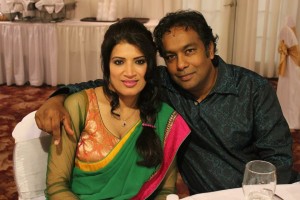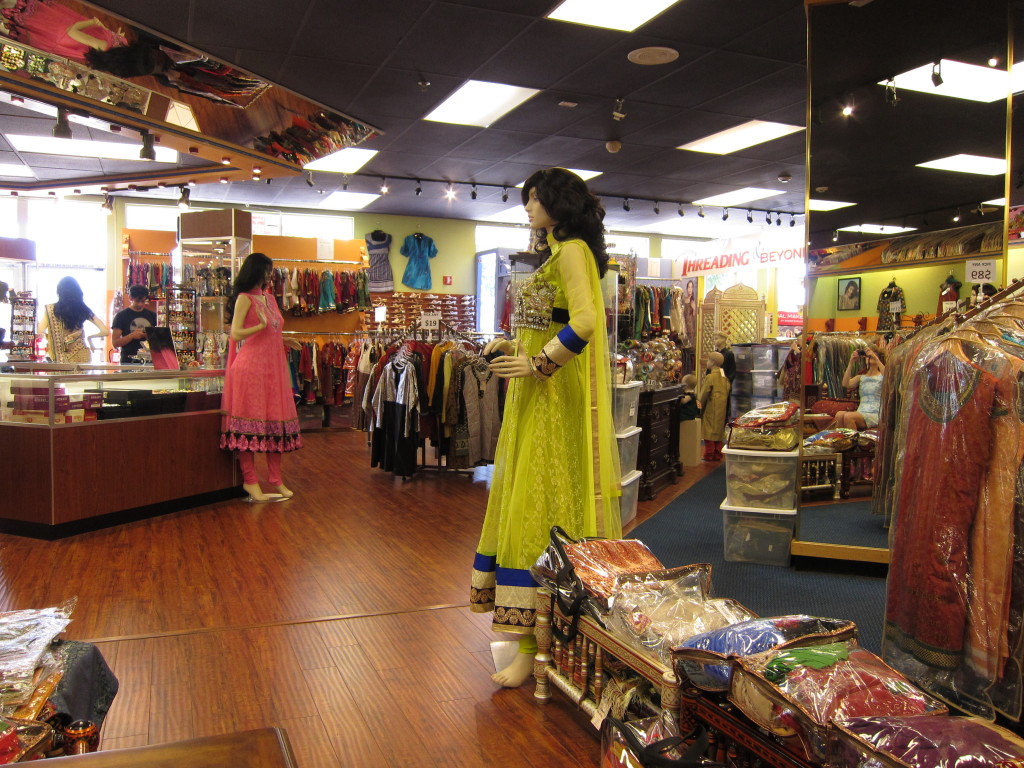
By Sharon Simonson
Sagar Exclusive bills its Sunnyvale showroom as the largest for Indian apparel in the United States. It is 8,000 square feet at 939 W. El Camino Real, next door to the Chaat House, whose savory Indian snacks drew Sagar’s owners, Varsha Patel and Reuben Kanhai, to the location in the first place.
“I have surveyed Chicago, Los Angeles — also Australia, New Zealand and Canada — wherever I travel, I look for Indian stores. There are about 1,000 Indian clothing stores in the United States,” Patel said. Based on square footage and diversity of offerings, she has concluded that Sunnyvale’s is the largest.
It is her second Bay Area showroom — the first still operates in Hayward — and caters to customers from Los Gatos and Saratoga to Los Altos, for whom Hayward is a trek too far. But, Patel’s clients are scattered worldwide, and they are by no means all of Southeast Asian descent. “Forty percent are non-Indian,” Patel said. “I have all races.”

Of the marriages where Sagar provides the wedding garments, half involve couples where the bride or groom is not Indian. “The tops we have, like our cotton smocks, go with jeans and leggings, and so Indian fashion is becoming mainstream because of the ease of use,” Kanhai said.
Half of their business is tailoring pieces that clients have bought in India that are the wrong size or imperfectly made. “These are very complicated garments, and there is a lot of handwork,” he said. Sagar also makes custom clothing. Patel designs all of her garments herself, traveling to India several times a year to purchase fabric, and has created ensembles that can take as long as two years to construct and cost as much as $10,000.
“Indian people save all of their lives for their children’s weddings. The wedding is the single biggest event in Indian life. It used to be that the man was the desired one, but now there is a shortage of women because there has been so much killing of girls,” Kanhai said.
A former commercial real estate broker in the East Bay (he maintains his license), Kanhai stopped full-time brokerage in 2010, the same year the couple opened the Sunnyvale store. He is 48 years old, came to the United States in 1990 and describes himself as a “Fijian-born Indian.” His wife is 47, and from the Indian state of Gujarat. The couple met in 1998 in the United States, keeping Kanhai from a contemplated return to Fiji, where, he said, “I was a high school teacher, and I had a good lifestyle.”
Gujarat is home to India’s new prime minister, Narendra Modi, and Kanhai expresses fantastic hope at his election. “We travel all through India when we go, and we touch most of the states and big cities,” he said. “There is nothing in India like Gujarat. The water is clean. The roads are nice. There is no violence and crime. It’s like a different country.”
“India is one of the most dangerous places in the world. In Delhi, a lady can’t walk at night, and lawlessness is the law of the land,” he said.
The couple has two sons, aged 21 and 9. They live in the Hayward Hills and are eyeballing a move to the other side of the bay. As it is, Patel’s mother operates the Hayward store where they stop every morning on their way to Sunnyvale. His mother also lives with the family.
Kanhai estimates there are more than 100 stores in Sunnyvale selling Indian clothing, food, jewelry, groceries and the like, and he believes the city is becoming a locus for Indian culture and life in the Bay Area. The couple scouted for their location for five years, almost settling in Fremont twice before pulling back. When they realized the Blockbuster Video store that previously occupied the Sunnyvale space was going out of business, they jumped.
At not quite 40,000 people, the Asian Indian population in Fremont is the second largest in the South Bay, constituting 18 percent of the town’s population. The largest Indian presence is in San Jose, at nearly 47,000 people, but due to San Jose’s size, they make up less than 5 percent of the whole.
At 22,100, Sunnyvale’s Indian population grew 68 percent from 2000 to 2012 — fast but not as fast as in Cupertino, Fremont, or Santa Clara. Still, Kanhai is convinced that Sunnyvale is developing a social, business and service infrastructure that, coupled with the city’s mild weather and reputation for public safety, not only reflects the increased Indian population but that will of itself cause that population to grow.
“America is the great hope. You can think outside the box, and you can do things that other countries don’t let you do. All of the other countries, you have to have connections and tons of money (to start a business). There is no credit system; there is no support. Even buying a home or a car, it is all cash,” he said.
“In India, it is all about who you know. You can have the best education in the world there, and they won’t let you get up,” he said.